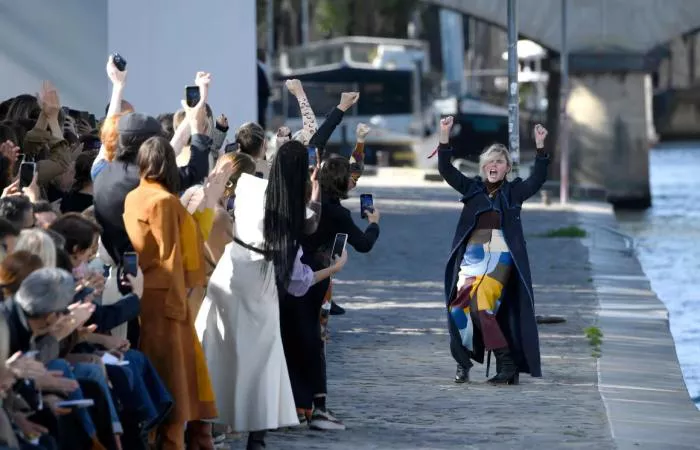When Gabriela Hearst took the helm as creative director of Chloé in December 2020, the luxury fashion house braced for transformation. Known for her commitment to sustainability, the Uruguayan designer was a natural fit for the 70-year-old French brand, which had signaled a shift toward purpose-driven fashion under CEO Riccardo Bellini.
Hearst’s approach to design is deeply rooted in her upbringing. After inheriting her family’s ranch in Uruguay, she embraced a philosophy of slow, intentional production—crafting small-batch, hand-finished pieces to minimize waste. “Everything gets used on a farm,” she said in an interview at Chloé’s Paris showroom. “That’s where I learned utilitarian sustainability.”
Now splitting her time between New York and France, Hearst balances her eponymous label with her work at Chloé, applying the same ethos to both: questioning each product’s environmental footprint. “Is it saving water? Using fewer fossil fuels? Can we ship by boat instead of plane?” she asks. Her designs don’t come cheap—a $5,895 leather skirt or a $3,000 cashmere poncho—but Hearst argues luxury should mean longevity. “Buy what you want to pass down,” she advises, echoing her mother’s belief in lifelong garments.
Scaling Sustainability
Since joining Chloé, Hearst has pushed the brand toward tangible change. Her debut collection, produced in just two months, eliminated polyester and viscose in favor of organic and recycled materials. A collaboration with the Sheltersuit Foundation repurposed deadstock fabrics into backpacks, with each sale funding two coats for homeless individuals.
Her latest initiative, Chloé Craft, highlights handmade artisan pieces while tackling the challenge of scaling eco-conscious production for high-volume items like the Nama sneakers. The brand’s recent B Corp certification—a first for a luxury fashion house—underscores its commitment, though Hearst admits the industry has far to go. “We’re not perfect, but we’re freaking trying,” she said.
A Personal Mission
For Hearst, sustainability isn’t just strategy—it’s personal. A 2017 trip with Save the Children to drought-stricken Kenya left her haunted by the human cost of climate inaction. “I can’t turn a blind eye,” she said. At COP26, she urged delegates to look beyond politics: “It’s artists and scientists who’ll get us out of this.”
Her message to the fashion world? Imperfect action beats paralysis. “We have to go with ‘good enough,’” she insisted. “If you’re not trying, you’ll be left behind.”
Related topics:

